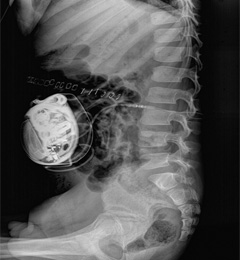Stroke Rehabilitation:
A stroke occurs when the blood supply to part of your brain is interrupted or reduced, preventing brain tissue from getting oxygen and nutrients. Brain cells begin to die in minutes. A stroke is a medical emergency, and prompt treatment is crucial. Early action can reduce brain damage and other complications. Most strokes are caused by an abrupt blockage of arteries leading to the brain (ischemic stroke). Other strokes are caused by bleeding into brain tissue when a blood vessel bursts (haemorrhagic stroke). Because stroke occurs rapidly and requires immediate treatment, stroke is also called a brain attack. The effects of a stroke depend on which part of the brain is injured, and how severely it is injured. Strokes may cause sudden weakness, loss of sensation, or difficulty with speaking, seeing, or walking.
Stroke is one of the leading causes of death and disability in India. The estimated adjusted prevalence rate of stroke range from 84-262/100,000 in rural and 334-424/100,000 in urban areas. The incidence rate is 119-145/100,000 based on the recent population based studies. There is also a wide variation in case fatality rates with the highest being 42% in Kolkata. According to the Global Burden of Disease study of 2013, 25.7 million people survived stroke, 6.5 million died, and 10.3 million new strokes were recorded. It also noted that the low-and middle-income countries (LMICs), of which India is a part, have witnessed more than 100 per cent increase in incidence of stroke whereas the developed countries have witnessed a drop of 42 per cent.
Of the surviving patients, 60% who suffered an ischaemic stroke and 38% with intracerebral haemorrhage survived one year, compared to 31% and 24% respectively, after five years. At the end of 5 years, 29% of the stroke patients were still alive. Also those 50 years or younger had a higher survival rate than those 70 or older. Additionally, the long-term survival rate (five years) is better in patients who suffered from intracerebral haemorrhage compared to those with ischemic stroke. However, those who suffered from intracerebral haemorrhage were more likely to pass away within the first 30 days of the stroke. Among 30-day survivors of first-ever stroke, about half survive 5 years; of survivors, one third remain disabled, and 1 in 7 are in permanent institutional care.
Studies have shown that annually 15 million people worldwide suffer a stroke. Of these, 5 million die and another 5 million are left permanently disabled, placing a burden on family and community. The same study says that the incidence of stroke disability in India is estimated to be around 10 -14 per 2000 patients. At an average of 250/100000 population there are about 25 million disabled people.
Post stroke rehabilitation is a very important part of stoke management. Stroke usually causes paralysis with spasticity of one side of the body. Incidence of spasticity in those with weakness ranged from 33% to 78%. People with arm spasticity and contracture may develop abnormal limb posturing and difficulty in using the hand. Especially if the right hand is involved the person is really crippled. Many studies have shown that by three months after stroke hemiplegia 20 to 25 % of patients develop severe spasticity in the upper limb and 19 to 22% of patients in the lower limb. Spasticity affects physiotherapy which is a very very important part of stroke rehabilitation.
The drug used to treat spasticity is baclofen. Baclofen is a muscle relaxant and antispasticity drug. But the main problem with oral baclofen is that the absorption of the drug from the stomach is very erratic. When baclofen is administered orally, only a small portion of the original dose crosses the blood brain barrier and enters the central nervous system (CNS) fluid, which is the site of drug action. The main adverse effects of oral baclofen include sedation, excessive weakness, dizziness, mental confusion, and somnolence. The incidence of adverse effects is reported to range from 10% to 75%. In order to bypass the oral route, baclofen may be administered intrathecally by infusion directly to the CNS.
The brain and spinal cord is bathed in a fluid called cerebrospinal fluid (CSF). So if any drug is put at the lower back, it can travel to the brain. This principle is used in cases of intrathecal drug delivery systems. The direct infusion into the intrathecal space minimizes the amount of drug needed to be effective. Limits or eliminates the common undesirable side effects associated with taking oral medications for spasticity. It can deliver a precise and consistent and continuous drug dose throughout the day, so as to avoid the peaks and valleys of taking oral medication. Also the dosing is very flexible and can be programmed as needed.
Before the surgery always a trial procedure is done on a OPD basis. Here 1 ml of baclofen is put into the CSF through a lumbar puncture and the effects as well as side effects are noted. If the effects are good and there are no side effects, then surgery will benefit the patient. In patients with stroke this will reduce the stiffness of the affected hands and legs. This way the physiotherapist can then improve the muscle strength and train the patient to use the hands and legs.
This surgery is approved by various international agencies and in India by the CGHS, ESI etc. The pump has a capacity of 40 ml and can be refilled as an OPD procedure. This is usually once or twice ayear depending on the dose of drug required. There are usually not much complications of surgery except the usual infection, bleeding and hardware issues. However abruptly stopping the drug is dangerous and so patient has to be very prompt in refilling.
Given below is a picture of the pump (in colour) and X rays of a patients after surgery showing the pump.




